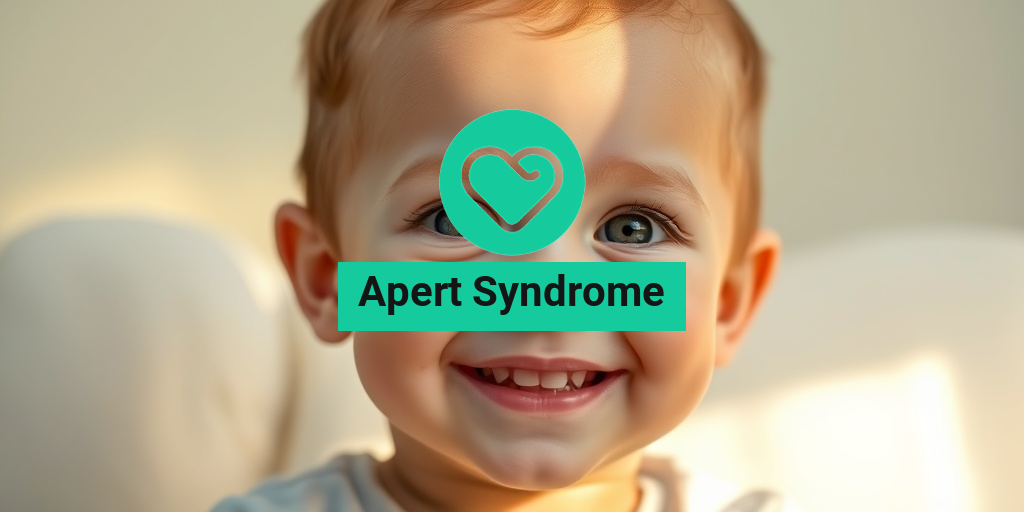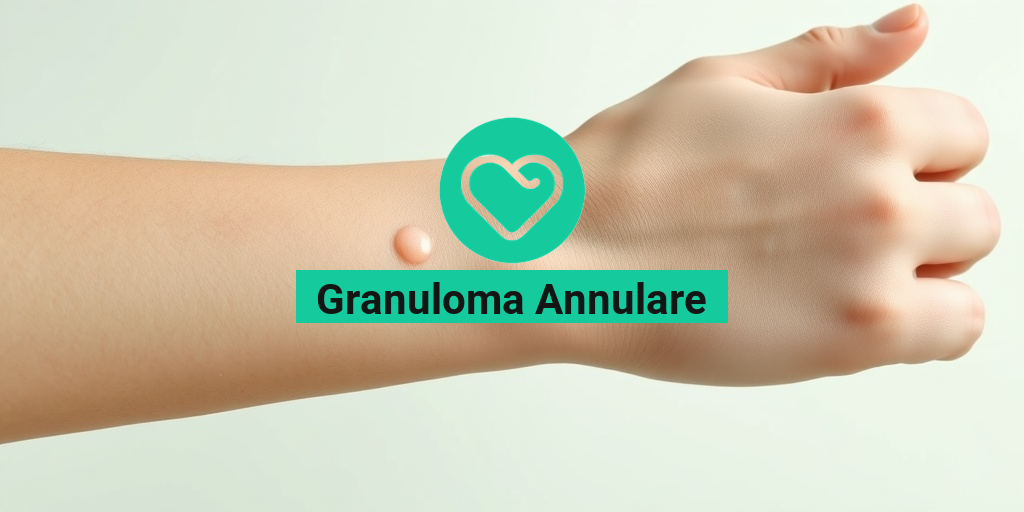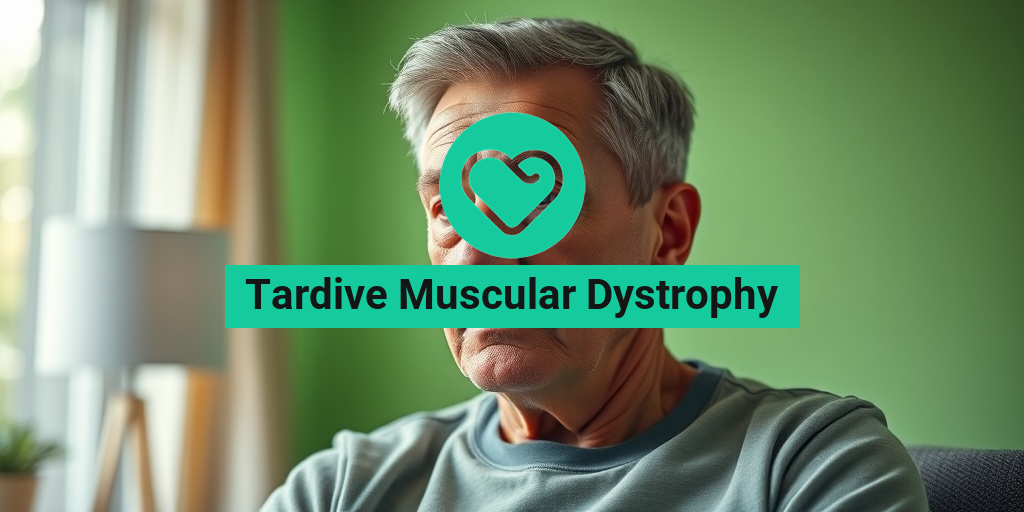What Is Apert Syndrome?
Apert Syndrome is a rare genetic disorder that falls under the category of craniosynostosis syndromes. It is characterized by the premature fusion of certain skull bones, which can lead to a variety of physical abnormalities. This condition is named after the French surgeon, Dr. Eugène Apert, who first described it in the early 20th century. The genetic mutation responsible for Apert Syndrome typically occurs in the FGFR2 or FGFR1 genes, which are crucial for normal bone development.
Individuals with Apert Syndrome often exhibit a range of features, including distinctive facial characteristics, fusion of fingers and toes (syndactyly), and potential cognitive challenges. The severity of symptoms can vary significantly from person to person, making early diagnosis and intervention essential for improving quality of life.
Understanding the Genetic Basis
The genetic mutations associated with Apert Syndrome are usually spontaneous, meaning they occur randomly and are not inherited from parents. This condition is classified as an autosomal dominant disorder, which means that only one copy of the mutated gene is sufficient to cause the syndrome. As a result, individuals with Apert Syndrome have a 50% chance of passing the mutation to their offspring.
Prevalence and Demographics
Apert Syndrome is estimated to occur in approximately 1 in 65,000 to 1 in 88,000 live births. It affects both males and females equally and can be found in individuals from all ethnic backgrounds. While the condition is rare, awareness and understanding of Apert Syndrome are crucial for early diagnosis and management.
Apert Syndrome Symptoms
The symptoms of Apert Syndrome can vary widely, but they generally fall into several categories, including craniofacial features, limb abnormalities, and potential cognitive impairments. Understanding these symptoms can help in early diagnosis and treatment.
Craniofacial Features
- Flat forehead: Many individuals with Apert Syndrome have a prominent forehead due to abnormal skull shape.
- Wide-set eyes: The eyes may appear spaced apart, giving a characteristic appearance.
- Beaked nose: A distinctive nose shape is often observed, which can be more pronounced in some individuals.
- Dental issues: Misalignment of teeth and other dental problems are common due to jaw abnormalities.
Limb Abnormalities
One of the hallmark features of Apert Syndrome is syndactyly, where fingers and toes are fused together. This can affect both the hands and feet, leading to varying degrees of functional impairment. In some cases, surgical intervention may be necessary to separate the digits and improve hand function.
Cognitive and Developmental Considerations
While many individuals with Apert Syndrome have normal intelligence, some may experience developmental delays or learning difficulties. Early intervention through therapies and educational support can significantly enhance cognitive outcomes. Regular assessments by healthcare professionals can help monitor developmental progress.
Other Associated Health Issues
Individuals with Apert Syndrome may also face other health challenges, including:
- Hearing loss: Due to structural abnormalities in the ear.
- Vision problems: Such as strabismus (crossed eyes) or other ocular issues.
- Cardiac defects: Some individuals may have congenital heart conditions that require monitoring.
Conclusion
Apert Syndrome is a complex condition that requires a multidisciplinary approach for management. Early diagnosis and intervention can greatly improve the quality of life for those affected. If you suspect that you or someone you know may have Apert Syndrome, it is essential to consult with a healthcare professional for a comprehensive evaluation.
For more information and resources on Apert Syndrome and other health-related topics, consider visiting Yesil Health AI, where you can find evidence-based answers to your health questions. Remember, knowledge is power when it comes to managing health conditions! 💪

Apert Syndrome Causes
Apert Syndrome is a rare genetic disorder characterized by the fusion of certain skull bones, leading to a variety of physical abnormalities. Understanding the causes of Apert Syndrome is crucial for parents and individuals affected by this condition. Let’s delve into the primary factors that contribute to its development.
Genetic Mutations
The primary cause of Apert Syndrome is a mutation in the FGFR2 or FGFR1 genes. These genes are responsible for encoding fibroblast growth factor receptors, which play a vital role in cell growth and development. When mutations occur, they can disrupt normal bone formation, particularly in the skull and face.
Inheritance Patterns
Apert Syndrome is typically inherited in an autosomal dominant manner. This means that only one copy of the mutated gene from an affected parent can lead to the condition in their offspring. However, in some cases, the mutation can occur spontaneously, meaning it arises without a family history of the disorder.
Environmental Factors
While genetic mutations are the primary cause, researchers are also exploring potential environmental factors that may contribute to the development of Apert Syndrome. Although no specific environmental triggers have been definitively identified, factors such as maternal health, exposure to certain medications, or toxins during pregnancy may play a role in increasing the risk of congenital disorders.
Apert Syndrome Diagnosis
Diagnosing Apert Syndrome involves a combination of clinical evaluation, imaging studies, and genetic testing. Early diagnosis is essential for managing the condition effectively and providing appropriate care.
Clinical Evaluation
Healthcare providers typically begin the diagnostic process with a thorough clinical evaluation. This includes:
- Physical Examination: The doctor will assess the child’s physical features, looking for characteristic signs of Apert Syndrome, such as craniosynostosis (premature fusion of skull bones), facial abnormalities, and syndactyly (fusion of fingers or toes).
- Medical History: A detailed medical history will be taken, including any family history of genetic disorders.
Imaging Studies
Imaging techniques, such as X-rays or CT scans, are often employed to visualize the skull and assess the extent of craniosynostosis. These images help doctors understand the specific bone fusions and any associated complications.
Genetic Testing
To confirm a diagnosis of Apert Syndrome, genetic testing can be performed to identify mutations in the FGFR2 or FGFR1 genes. This testing is particularly useful in cases where the clinical features are not entirely clear or when there is a need for family planning considerations.
Multidisciplinary Approach
Diagnosing and managing Apert Syndrome often requires a multidisciplinary approach. This may involve a team of specialists, including:
- Pediatricians
- Geneticists
- Surgeons (particularly craniofacial surgeons)
- Occupational and physical therapists
By collaborating, these professionals can provide comprehensive care tailored to the individual needs of the patient, addressing both physical and developmental challenges associated with Apert Syndrome.
In summary, understanding the causes and diagnosis of Apert Syndrome is vital for affected individuals and their families. With advancements in genetic research and medical care, there is hope for improved outcomes and quality of life for those living with this condition. 🌟

Apert Syndrome Treatment Options
Apert Syndrome is a rare genetic disorder characterized by the fusion of certain skull bones, leading to a variety of physical and developmental challenges. While there is no cure for Apert Syndrome, several treatment options can help manage its symptoms and improve the quality of life for those affected. Understanding these options is crucial for parents and caregivers navigating this condition.
1. Surgical Interventions
One of the primary treatment options for Apert Syndrome is surgical intervention. These surgeries aim to correct physical abnormalities and improve functionality. Common surgical procedures include:
- Cranioplasty: This surgery reshapes the skull to allow for normal brain growth and development. It is often performed in infancy or early childhood.
- Facial Reconstruction: To address facial asymmetry and improve appearance, facial reconstruction surgeries may be necessary. These can include procedures to separate fused bones in the face.
- Hand Surgery: Many individuals with Apert Syndrome experience fusion of the fingers (syndactyly). Surgical intervention can help separate the fingers and improve hand function.
2. Orthodontic Treatment
Due to the dental and facial structure changes associated with Apert Syndrome, orthodontic treatment is often required. This may involve:
- Braces: To align teeth properly and improve bite.
- Jaw Surgery: In some cases, surgery may be needed to correct jaw alignment.
3. Speech and Language Therapy
Many children with Apert Syndrome may experience speech delays or difficulties. Engaging a speech-language pathologist can help address these challenges through:
- Individualized Therapy: Tailored sessions focusing on articulation, language development, and communication skills.
- Group Therapy: Encouraging social interaction and communication with peers.
4. Occupational and Physical Therapy
Occupational and physical therapy can play a vital role in helping individuals with Apert Syndrome develop essential life skills and improve mobility. These therapies may include:
- Fine Motor Skills Development: Activities designed to enhance hand-eye coordination and dexterity.
- Strength and Mobility Training: Exercises to improve overall physical strength and mobility.
Apert Syndrome Management
Managing Apert Syndrome involves a comprehensive approach that addresses both medical and developmental needs. Here are some key strategies for effective management:
1. Regular Medical Check-ups
Routine visits to healthcare professionals are essential for monitoring growth and development. These check-ups can help identify any emerging issues early on, allowing for timely interventions.
2. Multidisciplinary Care Team
Creating a care team that includes various specialists can provide a holistic approach to managing Apert Syndrome. This team may consist of:
- Pediatricians: To oversee general health and development.
- Geneticists: For understanding the genetic aspects of the condition.
- Surgeons: To perform necessary surgical interventions.
- Therapists: Including speech, occupational, and physical therapists.
3. Educational Support
Children with Apert Syndrome may require special educational support to thrive in school settings. This can include:
- Individualized Education Plans (IEPs): Tailored educational strategies to meet the child’s unique learning needs.
- Supportive Learning Environment: Ensuring that teachers and staff are aware of the child’s condition and can provide appropriate accommodations.
4. Emotional and Psychological Support
Living with a chronic condition can be challenging, both for individuals and their families. Providing emotional and psychological support is crucial. This can involve:
- Counseling Services: Professional support to help cope with the emotional aspects of the condition.
- Support Groups: Connecting with other families facing similar challenges can provide comfort and shared experiences.
In conclusion, while Apert Syndrome presents unique challenges, a combination of surgical interventions, therapy, and comprehensive management strategies can significantly enhance the quality of life for those affected. With the right support and resources, individuals with Apert Syndrome can lead fulfilling lives. 🌟

Apert Syndrome Genetic Factors
Apert Syndrome is a rare genetic disorder characterized by the fusion of certain skull bones, leading to a shaped head and facial abnormalities. Understanding the genetic factors behind this condition is crucial for both affected individuals and their families. Let’s delve into the genetic underpinnings of Apert Syndrome.
What Causes Apert Syndrome?
Apert Syndrome is primarily caused by mutations in the FGFR2 and FGFR1 genes. These genes are responsible for encoding fibroblast growth factor receptors, which play a vital role in cell growth and development. When mutations occur, they can disrupt normal bone formation and lead to the characteristic features of the syndrome.
Inheritance Patterns
Apert Syndrome is typically inherited in an autosomal dominant manner. This means that only one copy of the mutated gene from an affected parent can cause the condition in their child. Here are some key points regarding inheritance:
- 50% chance: Each child of an affected parent has a 50% chance of inheriting the mutation.
- New mutations: In some cases, the mutation occurs spontaneously, meaning it is not inherited from either parent.
- Family history: If there is a family history of Apert Syndrome, the likelihood of occurrence increases.
Genetic Testing and Counseling
For families affected by Apert Syndrome, genetic testing can provide valuable insights. Testing can confirm the diagnosis and identify specific mutations. This information is crucial for:
- Family planning: Understanding the risk of passing the condition to future children.
- Personalized care: Tailoring medical and surgical interventions based on the specific genetic mutation.
Genetic counseling is also recommended for families to discuss the implications of the diagnosis, potential risks, and available resources. This support can help families navigate the complexities of living with Apert Syndrome.
Apert Syndrome Support and Resources
Living with Apert Syndrome can present unique challenges, but numerous resources and support systems are available to help individuals and families cope. Here’s a look at some valuable support options.
Support Groups and Organizations
Connecting with others who understand the journey can be incredibly beneficial. Several organizations focus on craniofacial conditions, including Apert Syndrome:
- The Craniofacial Foundation of America: This organization provides support, education, and resources for families affected by craniofacial conditions.
- Face Equality International: A global organization advocating for the rights and inclusion of individuals with facial differences.
- Local support groups: Many communities have local support groups where families can share experiences and resources.
Medical Resources
Access to specialized medical care is crucial for managing Apert Syndrome. Here are some resources to consider:
- Pediatric specialists: Seek out pediatricians with experience in craniofacial disorders.
- Multidisciplinary teams: Many hospitals have teams that include surgeons, orthodontists, speech therapists, and psychologists to provide comprehensive care.
- Telehealth services: For those in remote areas, telehealth can connect families with specialists without the need for travel.
Educational Resources
Education is key to understanding Apert Syndrome and advocating for affected individuals. Here are some resources:
- Books and articles: Look for literature that discusses Apert Syndrome, its features, and management strategies.
- Webinars and workshops: Many organizations offer online events that provide valuable information and support.
- School resources: Collaborate with educators to ensure that children with Apert Syndrome receive the necessary accommodations and support in school.
In conclusion, while Apert Syndrome presents challenges, the availability of genetic understanding and support resources can significantly improve the quality of life for affected individuals and their families. By leveraging these resources, families can navigate the complexities of this condition with greater confidence and support. 🌟

Frequently Asked Questions about Apert Syndrome
What is Apert Syndrome?
Apert Syndrome is a genetic disorder characterized by the fusion of certain skull bones, which affects the shape of the head and face. It is part of a group of conditions known as craniosynostosis syndromes.
What are the common features of Apert Syndrome?
Individuals with Apert Syndrome often exhibit a range of features, including:
- Fusion of fingers and toes (syndactyly)
- Distinctive facial features, such as a high forehead and wide-set eyes
- Hearing loss
- Dental problems
What causes Apert Syndrome?
Apert Syndrome is caused by mutations in the FGFR2 or FGFR1 genes. These mutations affect the development of bones and tissues during early fetal development.
What is the life expectancy for individuals with Apert Syndrome?
With appropriate medical care and interventions, individuals with Apert Syndrome can lead fulfilling lives. Life expectancy can vary based on the severity of the condition and associated health issues, but many individuals live into adulthood.
How is Apert Syndrome diagnosed?
Diagnosis of Apert Syndrome typically involves a physical examination and imaging studies, such as X-rays or CT scans, to assess the skull and facial structure.
What treatments are available for Apert Syndrome?
Treatment for Apert Syndrome may include:
- Surgeries to correct skull shape and facial features
- Occupational and physical therapy
- Speech therapy for communication difficulties
Can adults have Apert Syndrome?
Yes, Apert Syndrome can be diagnosed in adults, although it is often identified in childhood. Adults may seek treatment for associated complications or cosmetic concerns.
What are the implications of Apert Syndrome on hands and feet?
Individuals with Apert Syndrome may experience syndactyly, where fingers and toes are fused together. This can affect hand and foot function, but surgical interventions can improve mobility and dexterity.
Are there any genetic tests for Apert Syndrome?
Yes, genetic testing can confirm the presence of mutations associated with Apert Syndrome. This testing is often recommended for families with a history of the condition.
Where can I find more information about Apert Syndrome?
For more detailed information, consider visiting reputable health websites, genetic counseling centers, or support groups dedicated to Apert Syndrome and related conditions.




